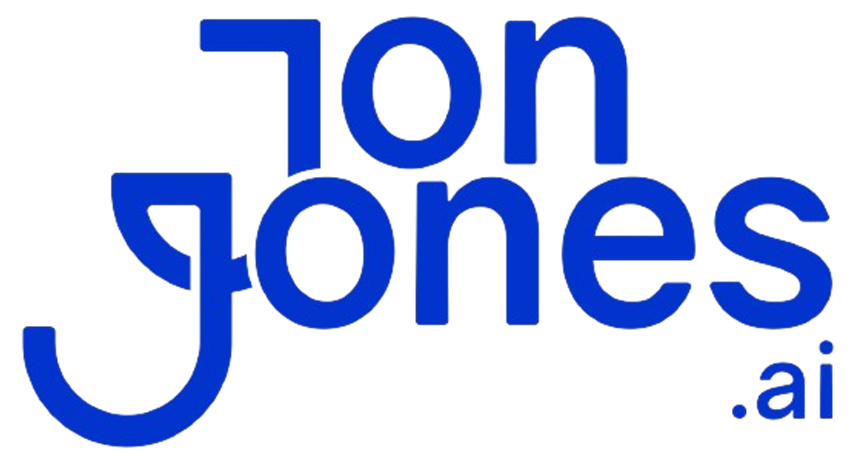Ever stare at a mountain of spreadsheets and feel like you’re wrestling with a giant puzzle?
We get it. Six out of 10 businesses struggle to turn raw numbers into real-time decisions.
But what if you could snap together accurate forecasts in seconds?
It’d be like having a crystal ball for your data.
In this post, we’re comparing eight predictive analytics tools (software that uses data to forecast future outcomes).
We’ll break down their top features, pricing, and user reviews.
By the end, you’ll know which tool fits your budget, team size, and tech stack.
Then, you’ll be ready to turn raw numbers into real-time insights, and steer your business with confidence.
Comparing Leading Predictive Analytics Tools: Features, Pricing & Reviews

Here’s a quick look at top predictive analytics tools (software that uses data to forecast outcomes):
- Datarails: blends spreadsheet-based financial planning & analysis (FP&A) with an AI-powered chat helper and mobile reporting
- Alteryx Designer: offers drag-and-drop workflows, machine learning (ML, which teaches computers to learn patterns), and team collaboration
- SAP Analytics Cloud: cloud platform with business intelligence (BI), scenario planning, predictive features, and 100+ content packs
We checked each tool’s main features, pricing, free trials, user reviews, and integrations. This side-by-side view helps you pick the right tool for your budget, your team size, and your tech setup.
| Tool | Key Features | Pricing | User Ratings | Trial | Integration | Pros & Cons |
|---|---|---|---|---|---|---|
| Datarails | Excel-based FP&A, AI chat, mobile app | Custom pricing | G2 4.7/5 (150+); Capterra 4.8/5 (80+) | No free trial | Excel, cloud ERP | +Familiar for Excel users -No trial |
| SAP Analytics Cloud | BI dashboards, scenario planning, predictive tools, 100+ content packs | $36/user/mo | G2 4.2/5 (500+); Capterra 4.4/5 (100+) | 30-day trial | SAP apps, cloud data | +Affordable -Steep learning curve, slow live models |
| Oracle Analytics | Data ingestion, modeling, ML, NLP (natural language processing) | On request | G2 4.1/5 (300+); Capterra 4.2/5 (16) | 30-day trial | Oracle DB, cloud | +Full analytics stack -Complex setup |
| Alteryx Designer | Low-code workflows, augmented ML | Cloud $4,950/yr; Desktop $5,195/yr (models extra) | G2 4.6/5 (600+); Capterra 4.8/5 (97) | No free trial | Big data tools, BI platforms | +User-friendly interface -Limited visualization, learning curve |
| Altair | AI analytics, on-prem/cloud/hybrid | On request | G2 4.1/5 (20+); Capterra 3.9/5 (18) | Not specified | SAS, IoT devices | +Flexible deployment -Confusing UI, limited cloud |
| Adobe Analytics | Real-time multi-channel tracking, anomaly detection, mobile app | On request | G2 4.1/5 (1,000+); Capterra 4.5/5 (200+) | Not specified | Adobe suite, web apps | +In-depth insights -Slow performance, few integrations |
Small teams and finance groups often pick Datarails or Alteryx Designer for a quick setup and familiar Excel feel. If you’re growing and already on SAP or Oracle, SAP Analytics Cloud or Oracle Analytics scales better.
Altair works when you need both on-premises and cloud, while Adobe Analytics shines for customer-facing teams that need real-time web insights.
Commercial vs Open-Source Predictive Analytics Tools

When you choose predictive analytics (analysis that uses data to forecast outcomes), you’re looking at two camps: open-source and commercial. Open-source software has free licenses, you can read and edit the code yourself. Commercial tools need a paid license but bundle training, a vendor help desk, and service level agreements (SLAs) that promise response times and uptime. Open-source support usually runs on community forums. You know, a Reddit thread or a Stack Overflow answer. Commercial users just pick up the phone and call a dedicated help desk.
Open-source frameworks keep costs low and let you tailor algorithms. For example, Prophet (a Python forecasting library) nails seasonal trends with clear syntax. And H2O.ai delivers cloud-based forecasting and built-in bias detection. But you might lose out on advanced multivariate models, polished visualization tools, or guaranteed bug fixes. Trade-offs, right?
Commercial platforms come loaded with features, connectors, and formal support channels. Take SAP Analytics Cloud:
- Scenario planning that shifts with your data
- An AI assistant for on-the-fly insights
- Over 100 prebuilt content packs you can plug in
Platforms like SAS Enterprise Miner or Scios add decision-intelligence workflows (step-by-step guides for data-driven choices) and vendor roadmaps with guaranteed updates. The catch? Higher fees and locked-down source code.
So, what’s your move? It boils down to budget, team skills, and how complex your data is. If you’re a small team that speaks code and loves flexibility, open-source might be your best friend. But if you need a polished interface, dependable support, and deep analytics out of the box, a commercial platform could save you time and headaches. Easy choice, right?
No-Code & Low-Code Predictive Analytics Tools

Ever felt stuck waiting on developers to build your next forecast? No-code predictive analytics tools let you drag-and-drop blocks and set parameters in a visual workspace, no coding needed. And if you need a bit of script, low-code forecasting tools sneak in just where you want them.
Nice.
You’ll run marketing, finance, or operations scenarios in hours, not days. We’ll free up your IT team for the heavy lifting. Real-time charts, data flows, and model options (models are prediction blueprints) keep everyone agile and insights flowing.
These platforms strike the sweet spot between power and simplicity. They bridge data scientists and business users, no handoffs, no bottlenecks. Plus, they come preloaded with templates for churn analysis (who might leave), sales forecasting, and risk scoring. You won’t be starting from zero.
Here’s a quick look at three favorites:
- Alteryx Designer: A drag-and-drop workflow tool that puts machine learning (ML: algorithms that learn patterns) building blocks right in analysts’ hands.
- Qlik augmented analytics: Offers on-screen model suggestions and interactive forecasts that adjust as you tweak filters.
- RapidMiner: A low-code environment with automated data cleaning, feature engineering (creating key predictors), and live trend analysis.
Mix and match these no-code and low-code tools in your stack. Spin off quick ad-hoc runs or build structured, repeatable pipelines. Check the comparison table above for full features, pricing, trials, and integration notes.
Deployment Options in Predictive Analytics Tools: Cloud, On-Premise & Hybrid

Cloud-based forecasting tools let us spin up predictive models (algorithms that forecast outcomes) in minutes, and you don’t even lift a server rack. We get managed infrastructure that scales up or down at peak times, and we only pay for what we use.
Platforms like AWS SageMaker, Azure Machine Learning service, and Google AI Platform pack storage, model training, and performance monitoring into a single dashboard. If you’re already on SAP Analytics Cloud for business intelligence (BI), everything lives under the same roof.
On-premise software stays inside your network, so your sensitive data never leaves your firewall. That setup helps you nail compliance (rules that keep data secure).
Tools such as Oracle Analytics on-premise need your IT team for updates and hardware planning. But hey, no cloud outages or surprise downtime during audits. Nice.
Hybrid deployment bridges speed and control. We keep core data processes on-site and ship containerized prediction engines, like Docker or Kubernetes microservices, to a public cloud or private cloud when you need extra muscle. It’s like using your own gym but borrowing a pro stadium when ticket demand soars.
When you compare these options, weigh compliance, in-house expertise, and budget. Pure cloud is perfect if you want fast scale and low admin overhead. On-premise makes sense for strict data residency needs. And hybrid setups let you flex for big jobs without losing governance.
For more on architecture trade-offs, visit AI for industry analysis.
Implementing Predictive Analytics Tools: Best Practices & Integration Tips

Data Preparation & Feature Engineering
We start by pulling your raw data from CRM (customer relationship management), ERP (enterprise resource planning), website logs, or spreadsheets. Then we clean it up, fill gaps, ditch duplicates, and line up scales so everything’s fair. Nice.
Next, we let feature engineering tools (think making new predictors like moving averages or one-hot encoding) do their magic. Then we pick the strongest features with simple correlation checks or quick scoring tests, tossing out the weak or redundant ones. A little work here saves you big headaches down the road.
Model Training & Validation
Now that your features are primed, we train models, either batch algorithms (they learn in batches) or online ones (they update as data streams in), depending on how fresh you need predictions. Then we run cross-validation (splitting data into folds to test consistency) to make sure it holds up. We track clear metrics, accuracy, precision, recall, or AUC (area under the curve). Finally, we fine-tune hyperparameters (like tree depth or learning rate) with automated grid or random searches so performance hits that sweet spot.
Deployment & Integration
After your model nails those validation checks, we build deployment pipelines: version control, artifact storage, and orchestration for batch jobs or live scoring. We containerize everything with Docker (to lock in dependencies) and spin it up in Kubernetes if that’s your jam. Then we hook endpoints into your apps via API libraries. Your website, CRM, or BI dashboard will pull predictions on demand, no messy glue code needed.
Monitoring, Privacy & Explainability
But it doesn’t end there. We set up DataOps (data operations) automation to schedule retraining and manage multiple model versions. We slip in privacy-preserving methods, like differential privacy (a way to blur individual data points) or secure multi-party computation, so sensitive info stays locked down. And for full transparency, we add Explainable AI (tools that break down each prediction into feature contributions). That way, your stakeholders trust the results and know exactly why the model said what it did.
Final Words
In the action, we compared top predictive analytics tools by features, pricing, trials, and user ratings. Then we dug into commercial vs. open-source options, from Prophet to SAP Analytics Cloud. We also showed no-code/low-code picks like Alteryx and RapidMiner.
Next, we mapped out deployment strategies, from AWS SageMaker to on-prem and hybrid setups, and shared best practices for data prep, model training, integration, and monitoring.
Now it’s on you to choose the right tools for predictive analytics that fit your budget, expertise, and growth goals. You’ve got this.
FAQ
Which tools are best for predictive analytics?
The best predictive analytics tools include Alteryx Designer for no-code workflows, SAP Analytics Cloud for scenario planning, H2O.ai for open-source machine learning, and IBM SPSS for advanced statistics.
What free tools are available for predictive analytics?
Free predictive analytics tools include scikit-learn (a Python library for machine learning), Facebook Prophet (time-series forecasting), Orange Data Mining (visual workflows), and RapidMiner Free Edition.
What predictive analytics tools and techniques are commonly used?
Predictive analytics tools use techniques like regression analysis, classification (sorting data into categories), clustering (grouping similar data), and time-series forecasting to predict future trends and outcomes.
How are predictive analytics tools used in healthcare?
Predictive analytics tools in healthcare forecast patient outcomes, reduce hospital readmissions, detect disease outbreaks early, and optimize staff scheduling using statistical models and machine learning.
What are predictive AI tools?
Predictive AI tools combine artificial intelligence (AI) and machine learning (algorithms that learn patterns) to automate forecasting, detect anomalies, and deliver real-time recommendations.
How does Excel support predictive analytics?
Excel supports predictive analytics with built-in forecasting functions, the Analysis ToolPak add-in, Power Query for data preparation, and Power Pivot for advanced trend modeling.
What advanced tools exist for predictive analytics?
Advanced predictive analytics tools like SAS Viya, IBM Watson Studio, and H2O.ai offer automated model building, bias detection, and scalable cloud deployment for complex data tasks.
What types of predictive analytics methods are there?
The four primary predictive analytics methods are regression (trend lines), classification (categorizing data), clustering (grouping similar records), and time-series forecasting (projecting future values).
What is the most used technique in predictive analytics?
Regression analysis, especially linear regression, remains the most used predictive analytics technique for modeling relationships and forecasting numerical outcomes.
What is predictive analytics software?
Predictive analytics software uses data, statistics, and machine learning to forecast outcomes, identify trends, and recommend actions, helping businesses improve decision-making and efficiency.






